
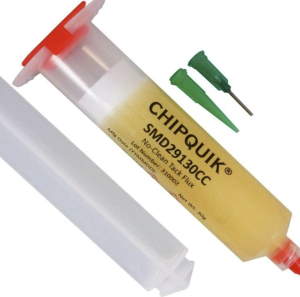



Choose the Best Flux For Soldering Electronics
[modalsurvey id=”1346890086″ style=”flat”]Customer’s Choice: the Best Rated Flux For Soldering Electronics
[survey_answers id=”1346890086″ style=”plain” data=”score”] users answered this survey. Please help us improve this review!
[survey_answers id=”1346890086″ style=”piechart” legend=”true”]
Each soldering process and job requires the use of a certain flux paste. But it is extremely important to invest in the compatible flux products. Flux is required because of three major points:
- Removal of oxidized metals from the surfaces;
- Prevents the air from oxidizing with the solid solder joint;
- Maintains wetting;
This guide is dedicated to the most suitable flux pastes for soldering electronics and wires. Some products go beyond these uses and can be picked for plumbing jobs, for instance.
However, all of the below-mentioned soldering flux products can be recommended for both professional electricians and DIYers who do occasional soldering jobs.
You may check the pros and cons of each flux for soldering electronics. You as a reader will get the comparison table with key specs of each flux paste. In the end, do not forget to read the buyer’s guide.
SRA Rosin Soldering Flux Paste– the best for the temperature range!
 The SRA Rosin Paste Flux is offered in a small container holding 2-ounce flux to complete all of your soldering applications. The flux is believed to speed up the soldering cycle by using less time and heat for melting of the solder.
The SRA Rosin Paste Flux is offered in a small container holding 2-ounce flux to complete all of your soldering applications. The flux is believed to speed up the soldering cycle by using less time and heat for melting of the solder.
Pros
- Designed specifically for soldering electronic devices and electronics
- Cleaning is minimal after the use
- The temperature range is 200 – 600°F
- All-American product
- Easy to apply
- Doesn’t include zinc
Cons
- Leaves a black residue
- Hard and dry solder flux
- It will get crystalized after the year of use
This flux paste comes in a convenient tin that is easy to take along. The SRA 135 is a soldering flux based on petroleum that contains rosin and an organic acid activator. It contains Ammonium Chloride or Zinc Chloride as opposed to many paste fluxes, making it perfect for electronic soldering repairs.
ChipQuik SMD291 No-Clean Tack Flux – best solder flux paste for electronics and rework!
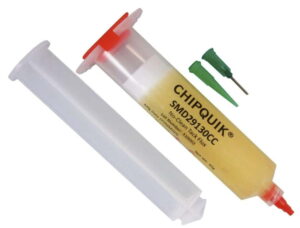 This SMD291 Flux is great for all electronics, circuit boards, and SMD soldering components and wire. It is a synthetic liquid tack paste flux that can be dispensed from a syringe. This makes it easy to dispense, unlike the thicker, pasty flux.
This SMD291 Flux is great for all electronics, circuit boards, and SMD soldering components and wire. It is a synthetic liquid tack paste flux that can be dispensed from a syringe. This makes it easy to dispense, unlike the thicker, pasty flux.
With this flux, you will increase performance and effectiveness for every single application you need to solder. It takes significantly less time for the solder to melt.
You only need a small amount, so, I use a needle to put it on the very small parts of my circuit board.
** I even use the SMD291 to re-hydrate the solder paste when we are making PCB panels.
See a video of the SMD291 used in hot air rework
Pros
- Acts quickly, pleasant odor
- Non-Corrosive, non-conductive, no-clean
- Excellent wetting agent
- Easily cleaned off with isopropyl alcohol
- Can be used with Leaded and Lead free applications
- Accurate flux for soldering electronics
- Made in America
Cons
- plunger in the syringe may be messy
LA-CO 22101 Regular Flux Paste – the best for copper soldering!
 LA-CO 22101 stands for a water-soluble flux product which appears to be the perfect flux for copper soldering of all forms. The chemical cleaning product must be non-acid, non-toxic, and lead-free for soldering a water pipe as maintaining health is the primary consideration in this regard.
LA-CO 22101 stands for a water-soluble flux product which appears to be the perfect flux for copper soldering of all forms. The chemical cleaning product must be non-acid, non-toxic, and lead-free for soldering a water pipe as maintaining health is the primary consideration in this regard.
A water-soluble paste has the greatest benefit that it is a more effective reactive cleaner than other rosin fluxes. Consequently, the tubing gets washed easily when you add the flux, and it flows the solder cleaner across the shaft. Moreover, this flux is all-weather compatible, regardless of the hot or cold climate.
Pros
- The best choice for copper and brass soldering
- Leaves no residue when you do soldering for water pipes
- Completely water-soluble flux paste
- All-American manufacture
- All-weather formula
Cons
- Not good for electronics and electric repairs with lead components
- The joints won’t last long on any electronics besides copper
The solder flux product complies with national standard ASTM B813 and does not include any zinc chloride to avoid corrosion issues. To remove health issues it is a non-toxic, non-acid, and lead-free product. Upon application, cleans the pipes – thus, allowing the solder to run smoothly on the pipes.
Novacan Old Masters Flux – the best for stained glass works!
 Novacan Old Masters Flux is a popular all-purpose flux paste based on zinc. One of the best benefits – it cleans quickly with water. You may pick this product for stained glassworks.
Novacan Old Masters Flux is a popular all-purpose flux paste based on zinc. One of the best benefits – it cleans quickly with water. You may pick this product for stained glassworks.
Also, according to user feedback, it is compatible with many soldering irons.
Pros
- Versatile and all-purpose
- The best choice for the artists and repairmen who work with stained glass
- Cost-effective
- Easy to clean with running water
- Good for beginners and experts
Cons
- The package could be more sealed
- The joints with lead could end up sticky
- Quality of the product could be better
This flux is manufactured on Canada’s west coast and is common in the stained glass niche. It is perfect for dealing with copper wire, and compatible with lead.
Harris SSWF1 Stay Silv Flux – the best for capacity!
 For use in silver brazing, the multi-purpose, low-temperature Harris SSWF1 flux product is chosen.
For use in silver brazing, the multi-purpose, low-temperature Harris SSWF1 flux product is chosen.Pros
- One of the best pick for silver brazing jobs
- Good consistency
- Melts instantly at the proper temperature
- The package has a reliable seal
- Large capacity
Cons
- Difficult to clean
- The melting point is too high – above the silver solder products
- Bad penetration
- Not compatible with copper
It has a very affordable size that will serve for a very long time period. A must-have product for soldering silver alloy solders to work with. Pick the solder with 56% silver content.
The Buyer’s Guide
Types
For electronic devices, 3 major types of soldering fluxes are widely used: rosin-core flux (RF), mildly activated rosin (RMA), and water-soluble flux (WSF). For electrical soldering, you should check the compatibility of the flux product with the metals used in your devices. Do not pick the flux pastes that directly specify that they are not suited for electronics.
Acid-core flux products for electrical work have to be skipped. Such flux tends to erode over time the metal solder joints. But adding acid-core flux when soldering the water pipes can be good.
Choose a flux paste that deoxidizes the metal surface easily and accelerates the soldering phase. Remove fluxes with heavy or violent activators because they are acidic/corrosive, allowing the soldered joints to be harmed. Such fluxes often need cautious removal and are not well designed for the more delicate jobs.
An RMA flux paste includes mild activators and is used to disinfect gritty wires – that is why you may pick these flux pastes for soldering electronic devices. Since this flux leaves stains after soldering, a fabric or flux remover can be used to clean it.
The newly enhanced product for soldering is water-soluble flux. The most important benefit of this flux is that when you’re finished it encourages quick washing. Additionally, it is easy to use and is all-weather capable. A water-soluble flux paste is therefore not suitable for soldering applications of all sorts.
You may instead use rosin-core solder flux in lieu of water-soluble flux. But to allow the flux to deoxidize and clean the metal surface, you’ll need to add some sort of chemical solvent. Rosin-core solder is often widely utilized because it leaves behind a large amount of oxidation upon soldering.
No-clean or clean?
You could also go for No-Clean flux for the soldering, as it requires little or no cleaning at all. This is when the electrical conductivity is not interacting with the remaining flux. (see SMD291 above)
Pick the non-flammable stuff. When the surface temperature reaches the cap, the non-flammable fluxes reduce the possibility of flash burning. In addition, select which flux in nature is – anti-spill or solubility.
The solubility design of the fluxes is simple to add since they are dense enough to remain in place and do not disperse to unintended locations. Certain fluxes that even after soldering stay conductive. The substance enables electricity and heat to pass through it due to the conductive nature that causes electrical malfunction.
Does it dry quickly?
The flux will be cooling easily and objects become securely bound together faster. A fast-drying paste can raise the likelihood that the flux can remain in position for longer. The flux should do a good job so that the bonding doesn’t fall out of place because you decide to alter or remove electronic parts.
Compatibility with metals
The flux will preferably be included for lead/tin alloys and lead-free alloys as well. This would mean you only should buy one flux product for the typical soldering job and require considering other types if you have to attach specific materials or have to be more precise when using the flux to the surfaces that require a strong bond.
Consistency
A flux paste or resin’s consistency is key to ensuring that the flux works as intended to. The paste or resin must be strong enough to trap oxygen and enable the bond. If the solder was fixed then the flux did its work. The flux pen is helpful when the attachment has come loose and needs a quick repair.
To help with the soldering the fluid protects the places to be soldered. Overall, putting too much flux on surfaces is safer than not enough. If the flux paste and attachment were out of reach utilizing too much flux product would make no difference.
Best Flux For Soldering Electronics FAQ
Which flux is used in electronics micro soldering?
While soldering electronics there are several flux types that you can use.
- No-clean. This flux type does not require special cleaning after;
- Rosin. To clean it after soldering you need to use special chemical solvents. They usually contain fluorocarbons;
- Rosin Substitutes. Depending on the ingredients, this flux can be cleared in the same way as standard Rosin;
- Water Soluble. This type can be easily cleaned with a distilled and deionized water with some detergents. Within each of them, you can find various products with different amounts of components.
How do you use flux when soldering electronics?
While soldering electronics you should be careful to be delicate in the soldering process. The flux helps in this process. In the beginning, you need to spread a small amount of flux over the place you plan to solder. It has to cover the area completely. If you have excess flux, it is important to remove it after the soldering process. Some flux can become corrosive if left on the parts.
See more details on using flux for soldering electronics.
Thus, you may not worry to have some of it in a paste form on your hands. Just clean them before the main soldering step. While soldering with flux you should also take into consideration the temperature. If it is too high, the flux will just evaporate too quickly. The maximum temperature depends on the type of flux you are using.
Can you use water-soluble flux for electronics?
Great variety fluxes are compatible with some soldering materials. Typically, the water-soluble flux has a higher activity, which leaves a residue that must be cleaned with water. The residue is corrosive and can damage the plate or components if not cleaned properly after use. It means that you can use it for electronics, however, you will need to perform decent cleaning in order to be sure that no water-soluble flux has remained.
On the market, you can find fully water-soluble flux for soft soldering that does not leave behind any of the previously unavoidable corrosive residues. Chemically neutral and electrically non-conductive water-soluble enables safe work without toxic fumes. Such flux is already chemically neutralized by heating and can be completely washed off with water. Moreover, the residues are neither hygroscopic nor electrically conductive.
Can you use Vaseline as flux?
In various soldering flux products, you can find that they are consist of petroleum jelly, what is stand for Vaseline. The active soldering grease based on Vaseline is ideal when large parts of oxidized non-ferrous or ferrous metals have to be soldered. All relevant welds must be of a low melting point. If you plan to solder with a common medical Vaseline, you may not achieve the wanted result. Nevertheless, it can still serve as a protective non-corrosive material. The protective fluxes protect the previously cleaned metal surface from oxidation and have no chemical effect on the metal. That is what Vaseline can be used for in the soldering process.
Can I solder without flux?
Soldering without flux seems quite strange to some people but there is an option that allows you not to worry about using flux. The Pallarium solder rods are hollow inside and filled with flux in the cavity. As soon as the solder rod is heated, the flux in the rod liquefies and flows perfectly together with the solder. Another advantage of the soldering bars is that they can be processed at an extremely low working temperature. Therefore, the materials are subject to a significantly lower thermal load than before. Filigree and heat-sensitive glasses frames can therefore be processed more easily. The Pallarium soldering rods are ideal for soldering silver, chrome-nickel-steel connections, brass, and the common metals used in eyewear production.
What can I use instead of flux to solder?
When connecting cables or soldering components, there does not seem to be any real alternative. Nevertheless, there are possibilities, which are at least theoretically available. A conductive adhesive that is often used in industry is also available in small quantities. The product is called “Wire-Glue” and is suitable as a replacement for soldering. The problem here, however, is the price. It is not that cheap and the widespread use of such an adhesive as a substitute for soldering is not particularly economical. In addition, the adhesive cannot be used particularly well for electronic components and very small soldering tasks. Classic soldering joints are certainly the method of choice here.
Soldering cables together is one of the basic tasks for the DIY enthusiast when it comes to repairing toys or household appliances. As a rule, so-called crimp connectors also work adequately when connecting cables. If you want even more security, you can use crimp connectors, which are also shrunk using hot air. So-called butt connectors and shrink butt connectors are easy to find and they are not that expensive. In practice, the durability of such connections can be compared to a soldered joint, so cables do not necessarily have to be soldered together. In the field of automotive electronics, such shrink-compression connectors are very often prescribed and preferably used.
Major types and uses of fluxes for soldering
- Rosin fluxes
Soldering with these fluxes is the easiest because the solder adheres well after using rosin flux. But soldering with this flux applied to the board must be done very carefully. Rosin fluxes are used to braze parts and wires damaged by corrosion because oxidation is dissolved by such fluxes. It is excellent for soldering electronics, wires, and connectors. - Water-soluble fluxes
Most often in paste form, used for soldering small radio components on the board. This flux does not contain aggressive acids, but it can conduct electricity, so washing is obligatory. Water-soluble fluxes do not damage the circuits but can cause a short circuit. With this type of flux, pre-treatment, cleaning of dirt, dust, and oxides may be required. - No-clean fluxes
It does not require flushing after the work, so it can be used for soldering SMD components, BGA chips and boards in hard-to-reach places where cleaning is not possible. No-clean flux will not damage the metal chips, also it won’t conduct electricity or cause corrosion.
Best Solder and Flux for Electronics
If you need to pick a solder and flux that will serve you well for just about all electronics, surface mount and even thru-hole, my strong recommendation:
-
TekLine T245 No-Clean Solder 63/37 .015″ (solder)
- ChipQuik SMD291 No-clean (flux)
Gel, paste or liquid flux for soldering: what to pick?
Liquid flux is not the most practical, because its consumption is the largest because it spreads on the board.
Gel-like flex is the most convenient and practical type because it is easy to apply and it does not spread over the board. Also, the majority of these fluxes is suitable for soldering BGA chips.
Flux pastes are the thickest type, applied with a blade, low consumption, at the high boiling point.
Top 5 best fluxes for soldering electronics and circuit boards:
- ChipQuik SMD291 best no-clean, non-corrosive tack flux, comes in syringe (10 & 30cc), RoHS & Reach compliant;
- SRA Soldering Products offers a great no-clean flux in a jar (2 ounces);
- LA-CO is a non-acid and non-toxic, water-soluble flux;
- Novacan is all-purpose zinc flux, it cleans up easily with water;
- Harris is a 1lb jar flux, with the highest active range – 1050°F-1600°F. Never use it on Mg, Al, Ti elements;
Video Tutorial: How To Solder with Flux
Final Thoughts
Various flux products may be very helpful throughout the soldering process when you do electronics projects. All the items tested will definitely allow soldering jobs to be done – just select the suitable flux paste with metals from your computer. When you decide which flux paste to buy and which one is capable of doing the job, consider all pros and cons. Depending on how much you solder the electric devices, purchasing two or three of those things for various jobs may be worthwhile.
My audience keeps asking what types of fluxes to use for soldering, I will try to help you with this choice. You will choose among 3 major types with peculiar features. I will disclose their peculiar features and tell what types of fluxes will do for the performance of different soldering tasks. Also, I will recommend my top 5 best fluxes for soldering, according to many years of personal experience. I hope you will find this review useful!
Keep in mind that the good flux product can handle all soldering tasks. There are many fluxes in the sale. It is possible to make a good flux at home by mixing a few products, but it is better to buy ready products that were repeatedly tested by manufacturers.
It is not that difficult to choose flux for soldering. You need to have information about all available brands and take into account the specifics of your tasks with a soldering iron. I hope my review and tips were useful. Keep reading SolderingIronGuide and please subscribe!

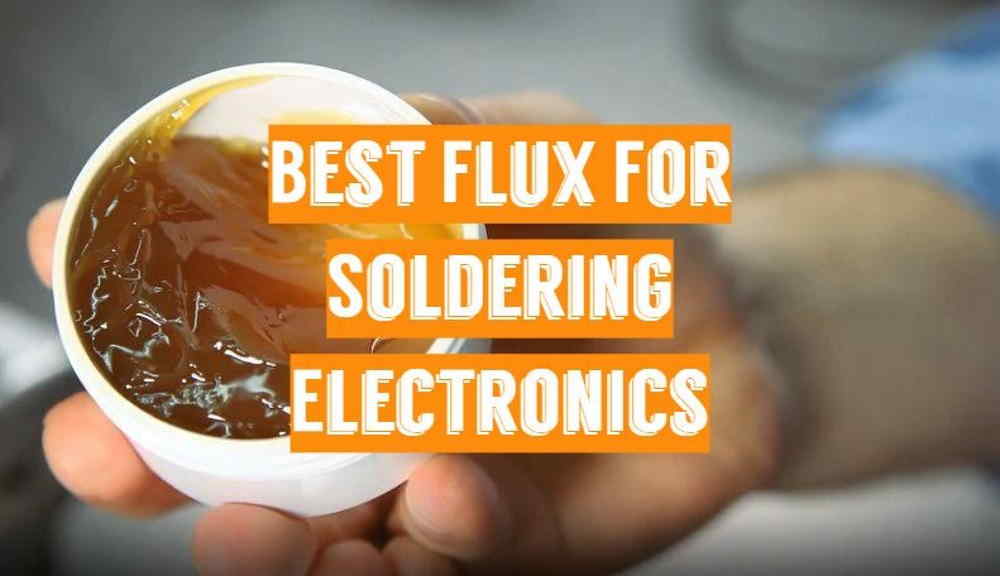
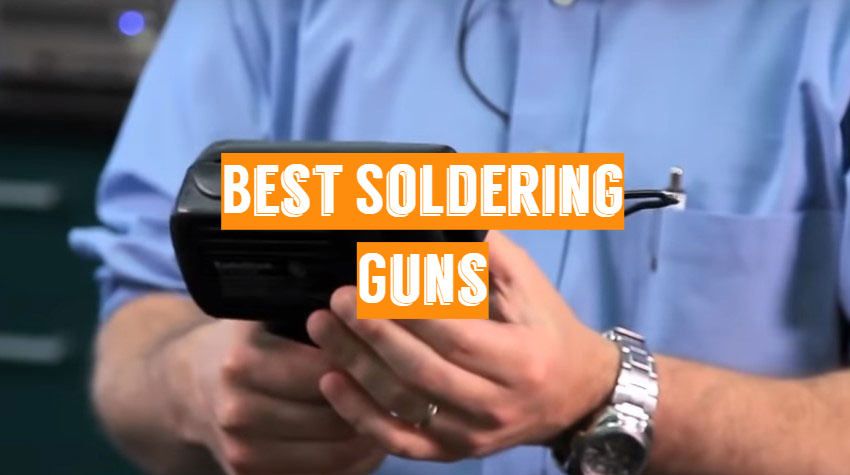
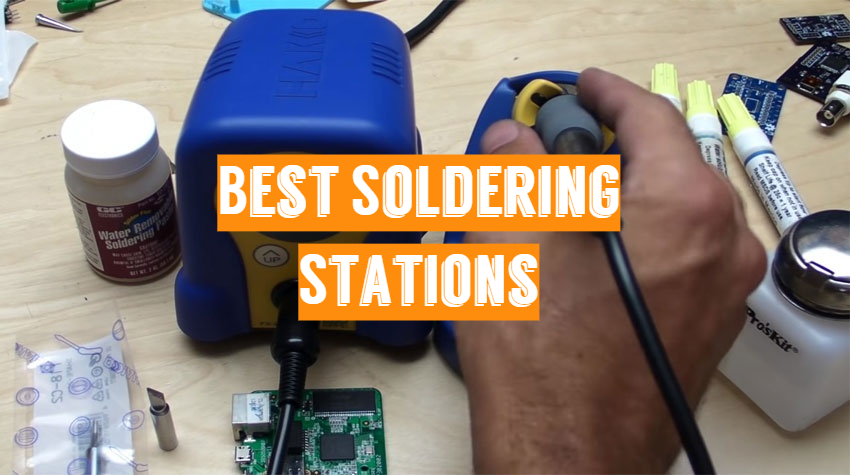
The SRA Rosin paste flux will speed up the soldering cycle. When you add this you will need less heat and time to melt the solder. Tested and it is so. SRA helps a lot and there’s not much cleaning to be done afterwards. For other paste products like this the cleaning is very difficult. This one is easy to apply, does not contain zinc and it is designed for work on electronic devices and electronics. As a downside that I have noticed after about a year of use it will become crystalized.
SRA soldering products is the best choice, bar none. It doesn’t need to be cleaned which is a big plus for me and has a good price compared with how much you get. It’s easy to apply, doesn’t spread over the board.
Hello, Will! Thanks for the comment.